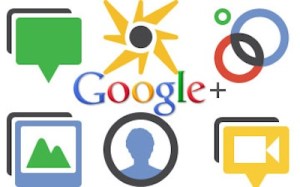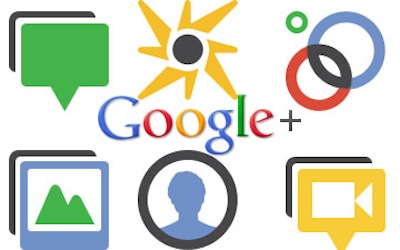Want smarter insights in your inbox? Sign up for our weekly newsletters to get only what matters to enterprise AI, data, and security leaders. Subscribe Now
 There are numerous comparisons between Google’s new Google+ social offering and Facebook, but most of them miss the mark. Google knows the social train has left the station and there is a very slim chance of catching up with Facebook’s 750 million active users. However, Twitter’s position as a broadcast platform for 21 million active publishers is a much more achievable goal for Google to reach.
There are numerous comparisons between Google’s new Google+ social offering and Facebook, but most of them miss the mark. Google knows the social train has left the station and there is a very slim chance of catching up with Facebook’s 750 million active users. However, Twitter’s position as a broadcast platform for 21 million active publishers is a much more achievable goal for Google to reach.
There are two different types of social networks, private and public — each defined by its default privacy setting. Facebook is by default private and meant to connect actual friends. Twitter by default is public and anyone can follow anyone else. Google+ is decidedly in the Twitter camp — meaning you can follow anyone, including Google CEO Larry Page. Google+ lets you see Page’s posts and “like” his photos of kite surfing in Alaska. When posting on Google+, it forces users to select specific social circles they are posting to, which includes “everyone” as an option that mimics a Twitter-style broadcast. If not for the lawsuits and FTC settlement about Google Buzz automatically broadcasting posts, it is likely that Google+’s default setting would be public posts.
Although Twitter is growing (having just hit 200 million tweets a day), Twitter has left itself open to be displaced with a slow pace of adding features. Even newly returned founder Jack Dorsey has said that it was too difficult for “normal” people to use Twitter.
So, how can Google go after the 21 million people who are actively publishing on Twitter, and, more importantly, the few thousands that own the majority of Twitter followers? These types of posters are generally publishers, and Google’s core competence is serving publishers. Publishers pay a lot of attention to Google, from search engine optimization to increase the ranking on Google searches, search engine marketing keyword ads to drive traffic, and on-site advertising solutions ranging from AdSense to DoubleClick.
Publishers are interested in increasing their search rankings and improving their reach. Posting content to Google+1 increases search rankings. The black toolbar across the top of all Google services (other than YouTube), which integrates both Google+ and Google+ notifications, definitely provides reach and is now in front of as many user minutes as Facebook commands. Users commenting or liking on items from publishers will show up in their friends’ toolbars. Even if they only have a few friends, the overall traffic bump will be significant. The Google+ bar has not yet been activated on YouTube, a key publisher and celebrity channel, and likely will broadcast YouTube likes, comments and shares.
 While Facebook is not sweating about Google+, the threat to Twitter is significant. Google has the opportunity to displace Twitter if it gets publishers and celebrities to encourage Google+ follows on their websites as well as pushing posts to the legions of Google users while they are in Search, Gmail and YouTube. Google was turned down when it tried to buy Twitter for $10 billion, and now it is going to try to replicate it. With Google+, the company actually has a shot.
While Facebook is not sweating about Google+, the threat to Twitter is significant. Google has the opportunity to displace Twitter if it gets publishers and celebrities to encourage Google+ follows on their websites as well as pushing posts to the legions of Google users while they are in Search, Gmail and YouTube. Google was turned down when it tried to buy Twitter for $10 billion, and now it is going to try to replicate it. With Google+, the company actually has a shot.
Peter Yared is the vice president of apps at Webtrends, which acquired Transpond, a social-apps developer he founded. You can follow him on Twitter.


